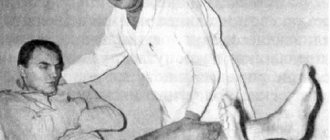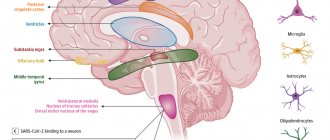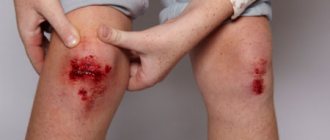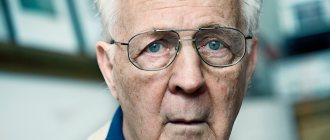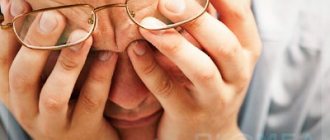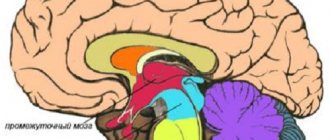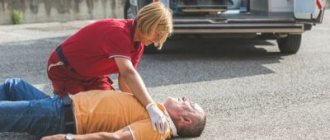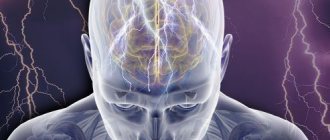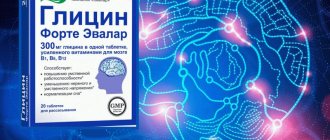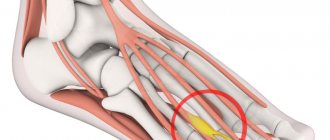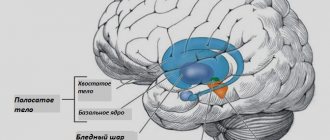1.General information
There is a special, extensive, but to date insufficiently studied group of disorders of higher nervous activity, which are called dissociative. The latter term means the loss, severance of relationships and productive interaction between individual neuropsychic functions (memory, self-identification, perception, motor activity, etc.).
Dissociative convulsions (dissociative convulsions, epileptiform seizure, pseudoseizure) is one of the many possible manifestations of this disorder, along with dissociative stupor, fugue, amnesia and many other phenomena of this kind. It is obvious that the therapeutic response and subsequent treatment in the case of pseudoseizures should be fundamentally different than in the case of “true” epileptic seizures. However, differential diagnosis is often fraught with significant difficulties, requiring the doctor (whether a general practitioner or a specialist) significant experience, critical thinking and the ability to quickly analyze all the nuances of the observed clinical picture in its origin and dynamics.
A must read! Help with treatment and hospitalization!
Diagnostics
It is necessary to distinguish episyndrome from true epilepsy. Therefore, it is very important to carry out an accurate differential diagnosis.
Patients are prescribed an MRI of the brain. This examination helps to identify the etiology of epileptiform syndrome. Foci of gliosis on the image indicate neuronal damage due to injury or stroke. Doctors call gliosis changes the proliferation of auxiliary cells in the brain. This is usually observed after the death of neurons.
An important method of differential diagnosis is the electroencephalogram. With episyndrome, the EEG may not show pathological changes. After all, foci of excitation in the brain appear only before an attack. In epilepsy, the electrical activity of the cerebral cortex is constantly increased.
2. Reasons
As stated above, dissociative disorders themselves constitute a complex problem, and simultaneously for several specialties (mainly in the psychoneurological direction). In particular, the question of the relationship between the concepts of “dissociative” and “conversion” disorder (the latter implies the unconscious transformation of psychological problems into physiological pathology) remains debatable: some experts consider these concepts to be synonymous, while others see significant differences.
However, in the etiopathogenesis of “classical” dissociative disorders, the role of the psychological factor is undeniable (psychotrauma, chronic stress, sexual abuse, experienced catastrophic situations, emotional rejection from parents in childhood, etc.). In addition, there is evidence of the possible provoking influence of such factors as drug sedation during outpatient surgical interventions, suggestive techniques during a psychotherapeutic course or zombification in totalitarian sects, religious fanaticism of a patient with a tendency to trance states, systematic intoxication with damage to the central nervous system (alcohol, drugs , occupational hazards). According to modern concepts, any dissociative disorder, incl. a convulsive pseudo-seizure is an extreme and unconscious attempt to compensate for any experiences that the central nervous system is not able to process in any other way.
From this point of view, it becomes clear why dissociative seizures are characterized by the same feature as other etiopathogenetically similar disorders, namely “conditioned desirability”, i.e. situational conditionality. If not the underlying cause, then at least the triggering factor for a pseudo-seizure is always circumstances or situations of a certain individually significant type. For example, in childhood, the psyche may react in a similar way to punishment or parents’ refusal to satisfy any demands.
Visit our Neurology page
Diagnosis of pathology
A child who has suffered an attack must be shown to a pediatric neurologist. The symptoms are very similar to epilepsy. Without special examinations, it is impossible to say what exactly caused the seizure.
Thus, diagnosis is based on excluding other sources of convulsions, such as epilepsy, neuroinfections.
A comprehensive examination includes the following:
- Blood test (biochemistry and general).
- Urine examination.
- Spinal tap. This fluid analysis allows us to exclude the presence of encephalitis and meningitis.
- Computed tomography or nuclear magnetic resonance.
- Electroencephalogram.
3. Symptoms and diagnosis
The basis of the clinical picture is more or less accurately repeated movements simulating a generalized epileptic seizure. The key words in this definition are “more or less” and “imitating”, since the motor manifestations of a real epi-attack are characterized by absolute stereotypy, clonicity of convulsive contractions, no matter in which muscle group they are observed.
This, however, does not mean that the patient is consciously “pretending”: the mechanism of conversion and/or dissociative disorders is much more complex than banal simulation.
However, in the development of a pseudo-seizure, some drama and theatricality can be traced; such an attack necessarily needs “spectators”, never develops alone and stops if no attention is paid to it. Often, pseudoconvulsive motor activity is accompanied by hysterical laughter, tears, and “fainting,” although in reality the patient does not lose consciousness and the memory for the period of the attack is preserved.
The most important differential diagnostic criteria are the dependence of the occurrence of seizures on specific situations, as well as the absence of objectively confirmed neurological syndromes and diseases, as well as the absence of the most dangerous symptoms of a true full-blown epileptic seizure (retraction or biting of the tongue, uncontrolled fall with the risk of serious injury, involuntary urination, loss of consciousness and corneal reflexes, characteristic foam on the lips, amnesia during the seizure period).
In order to exclude organic damage to the central nervous system, standard instrumental studies (EEG, CT, MRI, etc.) are prescribed. An important and informative method of clarifying diagnostics is an experimental psychological examination, which in some cases reveals a certain personal deformation and/or stimuli, themes, situations and other factors that are associated with the psychological root cause and can serve as a trigger for the “launch” of dissociative convulsions. .
About our clinic Chistye Prudy metro station Medintercom page!
Pathophysiology and causes of the process
Epileptiform syndrome, unlike seizures of an epileptic nature, does not have characteristic personality changes.
In many ways, the manifestations of the syndrome depend on the development of the current underlying disease. When curing from the main disease, the condition may be transient (for example, intoxication of the body due to alcohol poisoning, traumatic brain injuries).
Causes of the syndrome:
- malformations of the central nervous system of different nature;
- genetic disorders of the central nervous system;
- congenital defects of the central nervous system;
- birth trauma, hypoxia of newborns (with resuscitation);
- meningitis, encephalitis, granulomas, abscesses;
- toxic effects on the body: medications (taking them or stopping them), inorganic substances (lead, mercury, carbon monoxide), organic substances (alcohols, aldehydes);
- traumatic brain injury;
- problems with blood circulation in the brain;
- metabolic disorders;
- tumors;
- hereditary diseases: hereditary epilepsy;
- fever;
- cryptogenic epilepsy;
- degenerative diseases of the brain.
4.Treatment
The basic, main element of the treatment of dissociative seizures, as well as other disorders of this etiopathogenetic group, is psychotherapy. The course may take quite a long time or bring a quick positive effect, but without deep psychological diagnosis and correction, treating pseudo-seizures with medication (for example, antiparoxysmal drugs that are used for epilepsy) is completely useless. By the way, the ineffectiveness of antiepileptic drugs serves as one of the significant differential diagnostic criteria and indicates a dissociative, rather than organic, genesis of the disorder.
During psychotherapeutic treatment, drugs with other effects may be indicated - anxiolytics, antidepressants, tranquilizers - but they are purely additional, auxiliary in nature; the decision on their use and dosage, cancellation or replacement is made solely by the doctor.
Febrile seizures, description and a little history...
Febrile seizures have been known since antiquity. Hippocrates also argued that febrile seizures most often occur in young children (in the first 7 years of life).
They can occur much less frequently in older children and adults.
In general, febrile seizures are an important problem in pediatrics. Their relevance is determined by the potential to gradually or abruptly transform into various types of benign epileptic syndromes.
In addition, frequent febrile seizures can affect neurological and mental development.
The diagnosis of “febrile seizures” is often interpreted very generally - doctors include all seizures that are accompanied by a very high body temperature.
This can lead to inadequate treatment of dangerous neuroinfections due to their unknown nature, as well as inadequate prediction of febrile seizures themselves.
In 1905, the German scientist Hochinger proposed the term “random convulsions” to be used to specifically refer to paroxysms in infants that occur as a result of increased temperature.
It turns out that febrile seizures are not of an epileptic nature and differ from seizures of an epileptic nature.
Treatment methods
Parents, faced with convulsions in a child, begin to panic. In this state, they are simply not able to help their child. And the baby needs proper and adequate help. Therefore, the very first and most important rule is to calm down.
First aid
If your baby is having a seizure, it is important to consider 2 points:
- Prevent saliva and vomit from entering the respiratory tract.
- Protect your child from traumatic injury during a seizure.
To alleviate the condition of their child and protect him from negative consequences, parents must adhere to the following rules of behavior:
- Be sure to call an ambulance.
- It is advisable to call someone for help.
- The baby should be transferred to a hard surface. Avoid contact with dangerous objects. The child is placed on his side. The face is turned down. This position will protect the baby from the penetration of various components into the respiratory tract.
- Be sure to remember the time when the attack began. Strictly control its duration. To do this, use a watch, since parents who watch convulsions often lose their sense of time. Watch for signs of a seizure. Pay attention to the posture, the presence of consciousness, the location of the limbs, body, head, whether the child’s eyes roll back. It is these data that will tell the doctor what treatment the little patient needs.
- Watch your breathing. If the baby is tense and has no breathing, then immediately after the seizure it is necessary to start artificial respiration. It is useless to carry out this procedure until the attack has passed.
- Undress your baby and provide fresh air. Open the window. It is advisable that the temperature in the room be 20 C.
- Use physical methods to combat hyperthermia. You can grind it with water and vinegar.
- To reduce your temperature, use an antipyretic drug. However, drinking syrups or swallowing tablets is extremely undesirable and even dangerous. It is best to use Paracetamol suppositories.
- Don't leave your baby alone. You must be there to protect your baby from serious complications and injuries.
What is prohibited to do
Febrile seizures in children are scary. Therefore, parents, trying to alleviate the baby’s condition, often resort to completely unnecessary and sometimes dangerous measures.
Remember what to do is strictly contraindicated:
- Do not try to hold your child by force during a seizure. This may result in injury.
- Do not insert any objects into the baby’s mouth or stick out your tongue. It is only a myth that you can swallow your tongue during convulsions. In this case, manipulations with the mouth can end very badly, ranging from damage to the entry of a foreign body into the respiratory tract. There is already a serious threat to children's lives here.
- Do not cool with a cold bath. Such an event can provoke cardiac arrest.
- During convulsions, do not take medications or water. This may result in liquid entering the respiratory tract.
Additional treatment
Febrile seizures that last no more than 15 minutes and do not recur do not require additional therapeutic measures.
But if they are long-lasting and tend to recur, then the small patient will require an intravenous injection. An anticonvulsant drug is recommended, such as Phenytoin, Vvalproic acid, Phenobarbital. The doctor will do this after assessing the baby’s condition.
Sometimes hyperthermia and convulsions can be symptoms of extremely serious diseases - neuroinfections (meningitis, encephalitis). But don’t rush to panic, such diseases are extremely rare. If the doctor has any suspicions, he may prescribe additional examinations or recommend taking the baby to the hospital. Be prepared for this and do not resist, because your child’s health is at stake.

